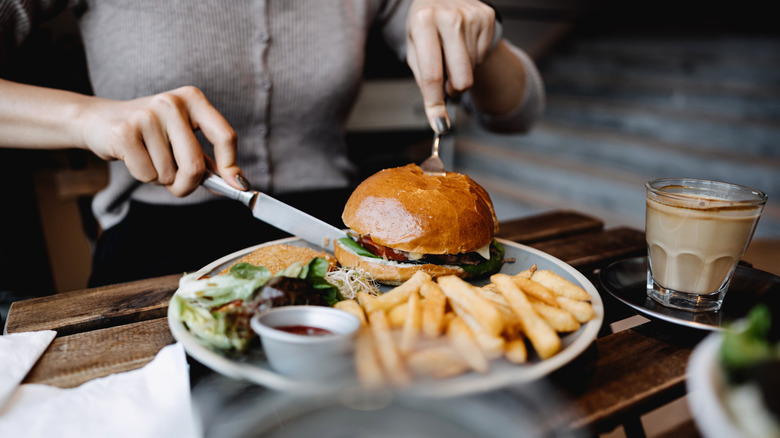As a kitchen professional, mastering the art of polite bite size cutting rules is essential for creating an elegant dining experience. This practice not only enhances the presentation of dishes but also ensures that each bite is as delightful as the last. Whether you are preparing a formal dinner or a casual brunch, understanding these cutting techniques can elevate your culinary creations.
In the culinary world, precision and etiquette go hand in hand. The ability to cut food into perfectly sized pieces reflects a chef's attention to detail and respect for their craft. It's more than just a technique; it's an art form that balances aesthetics with functionality. By adhering to these rules, you can transform a simple meal into a memorable dining experience.

The Importance of Bite Size Pieces
Why are bite size pieces important? The answer lies in the dining experience itself. Large, cumbersome bites can disrupt the flow of a meal, while perfectly sized portions allow diners to savor each flavor without distraction. This is especially important in high-end dining establishments where presentation and taste must harmonize.
Moreover, cutting food into smaller pieces can enhance the visual appeal of a dish. It allows for a more artful presentation, showcasing the ingredients and their colors. This attention to detail can make a significant difference in how a dish is perceived, both in taste and appearance.
Techniques for Cutting Etiquette
Mastering cutting etiquette requires practice and precision. Here are some key techniques to consider:
1. Understanding Knife Skills
Proper knife skills are fundamental to achieving the perfect bite size pieces. It's crucial to choose the right knife for the task at hand. For instance, a chef's knife is ideal for chopping vegetables, while a paring knife is better suited for more delicate tasks like peeling or trimming.
Additionally, maintaining a sharp knife is essential for clean cuts. A dull blade can crush or tear food, compromising both texture and presentation. Regular honing and sharpening should be part of your kitchen routine.
2. Consistency in Size
Consistency is key when it comes to cutting food. Uniform pieces ensure even cooking and a balanced presentation. This is particularly important in dishes like salads or stir-fries, where varying sizes can lead to uneven cooking and texture.
Practice makes perfect, so take the time to measure your cuts and aim for uniformity. This attention to detail will be appreciated by diners and can set your culinary creations apart.
3. Adhering to Cultural Etiquette
Bite size cutting rules can vary across cultures, and understanding these differences is vital for any kitchen professional. For example, in Western dining, it is customary to cut food into smaller pieces before eating, while in some Asian cultures, food is often served in bite-sized portions.
Understanding these cultural nuances can enhance the dining experience for guests from diverse backgrounds. It demonstrates respect for culinary traditions and a commitment to providing an exceptional dining experience.
Enhancing the Dining Experience
Incorporating polite bite size cutting rules into your culinary repertoire can significantly enhance the dining experience. Not only does it improve the presentation of dishes, but it also ensures that diners can enjoy each bite without having to struggle with oversized portions.
For further insights into the art of dining etiquette, consider exploring The Language of Cutlery, which offers a deeper understanding of table manners and presentation.
Additionally, for tips on handling knives effectively, visit our articles on Knife Handling Mistakes and Formal Dinner Knife Rules to refine your skills further.
Conclusion
Mastering polite bite size cutting rules is an essential skill for any kitchen professional. It reflects a commitment to excellence and a respect for culinary traditions. By understanding and applying these techniques, you can elevate your culinary creations and provide an unforgettable dining experience.
As you continue to hone your skills, remember that precision, consistency, and cultural awareness are key to achieving perfection. With practice and dedication, you can transform any dish into a work of art that delights both the eyes and the palate.

FAQ Section
What is the purpose of bite size pieces in dining?
Bite size pieces enhance the dining experience by allowing diners to enjoy each flavor without distraction and improving the visual appeal of dishes.
How can I improve my knife skills?
Practice regularly, choose the right knife for each task, and maintain a sharp blade to achieve clean cuts and consistent sizes.
Why is cultural awareness important in cutting etiquette?
Understanding cultural differences in cutting etiquette demonstrates respect for culinary traditions and enhances the dining experience for guests from diverse backgrounds.
This article contains affiliate links. We may earn a commission at no extra cost to you.


























